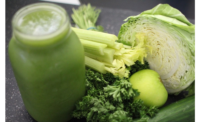The growing popularity of organic baby food will aid in the growth of the global baby food, infant formula market through 2020, reports Technavio (technavio.com).
Technavio’s latest report on the global baby food and infant formula market provides an analysis on the most important trends expected to impact the market outlook from 2016-2020. Technavio defines an emerging trend as a factor that has the potential to significantly impact the market and contribute to its growth or decline.
The top four emerging trends driving the global baby food and infant formula market according to Technavio food and beverageresearch analysts are:
- Packaging and innovation
- Growing popularity of organic baby food
- Expansion of product portfolios by vendors
- Increase in online purchasing
Packaging and innovation
In terms of packaging, products in glass or tubs contribute to the majority of baby food sales. However, fast growth is experienced by pouches, i.e., containers with plastic spouts on the top from which food can be sipped. The popularity of pouches is mainly attributed to their ease and flexibility. Baby food pouches are convenient and portable nutrition, as they are extremely compatible with consumers' on-the-go lifestyles and significantly promotes independent feeding.
Baby food pouches act as food-grade barrier film that aids in keeping the content inside the pouch fresh for longer. In addition, parents feed their baby in small portions and seal the food back in the pouch for later use. Baby food pouch storage is convenient in comparison to box and glass counterparts, as pouches do not occupy much space in diaper bags or the home pantry.
Growing popularity of organic baby food
With environmental conditions deteriorating globally, there is a rising anxiety as to the safety of the products we use and, even more so, the food we consume. “A growing trend towards organic products is witnessed, which stems from a concern for our health and general wellbeing and, even more so, that of our children. Organic baby products, food in particular, have therefore garnered much attention in recent years,” says Vijay Sarathi, a lead analyst at Technavio for food research.
Organic baby food products are in demand due to its many benefits. It contains no chemicals, pesticides, preservatives, hormones, or antibiotics. Many stipulations govern the manufacture, packaging, and labeling of organic baby food. All the cereals must be grown without using chemical fertilizers or pesticides. Dairy and poultry products are derived from livestock, which are fed organic feed and not administered growth hormones. The foods, once prepared, contain no preservatives, artificial flavors or colors, or other additives.
Expansion of product portfolios by vendors
Consumers increasingly demand varied options in terms of blends and flavors to cater to their babies’ nutritional requirement. Leading baby food manufacturers continually update their product lines to include new and unique products that set them apart from the competition. In July 2013, Plum Organics launched a toddler snack range, Mighty 4, a range of blended organic fruits, vegetables and grains.
Furthermore, it is believed that offering different variants and flavors of vegetables, fruits, and cereals will help develop the food habits of babies as they grow. In addition, companies are continuously developing their products to improve them, as parents prefer to give healthy and tasty food to their babies. Abbott launched non-GMO infant formula Similac in the US in 2015. In addition, it contains OptiGRO, which significantly helps in the development of babies' brains and eyes. It also launched products in the China, India, and Europe nutrition markets. Therefore, the extension of product portfolios by vendors is another driver that is propelling the growth of the market.
Increase in online purchasing
E-commerce retailers are competing with physical stores in terms of convenience and price, as the online platform reduces and eliminates physical infrastructure. In addition, online platform, in some cases, eliminates links in supply chain, helping them to provide products at a reduced cost. The online platform offers busy parents of compelling proposition of shopping whenever and wherever possible. Approximately 18% of parents have brought baby food online in 2015.
“Around one-third of people in APAC have ordered baby food through the online platform. Hong Kong and South Korea are the key leading regions in terms of purchasing baby food and infant formula through the online platform,” says Vijay.





